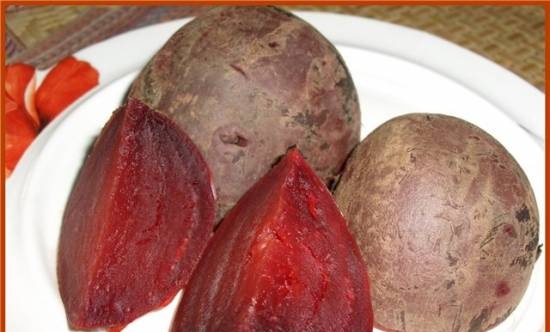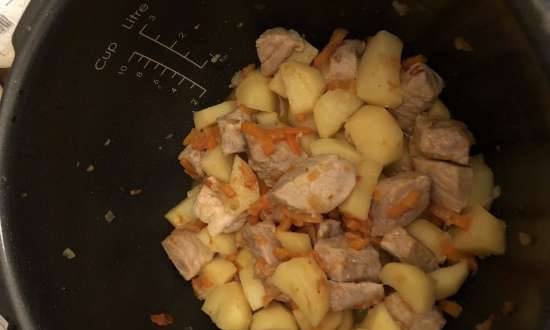|
 Proper storage of the harvested crop is very important. Even with abundant and brilliant results, some or even all of the crop can be lost if it is kept for a long time. Here are some tips to help you keep the fruits of your labor. Proper storage of the harvested crop is very important. Even with abundant and brilliant results, some or even all of the crop can be lost if it is kept for a long time. Here are some tips to help you keep the fruits of your labor.
White cabbage... The best varieties of cabbage for winter storage are Amager 611, Belorusskaya 85, Zimovka 1474, Yubileynaya 29, etc. They differ in keeping quality. The variety Zimovka 1474 is perfectly stored (until fresh greens comes from the open ground). The Amager 611 and Belorusskaya 85 heads of cabbage are preserved throughout the winter. The Yubileinaya 29 variety is stored for about three months.
Well-formed, dense, healthy and undamaged heads of cabbage are selected for winter storage. Leave a stump with a pin of at least 3 cm and covering green leaves, which protect against mechanical damage, excessive evaporation of moisture and fungal diseases.
It is best to store cabbage at a temperature of 0-1 ° C and a relative humidity of 90-95. In basements, cellars, heads of cabbage are laid on a wooden deck. The flooring is made of planks or slats with a distance of 5-6 cm between them. The distance between the flooring and the floor is 15-20 cm. In the bottom row, the heads of cabbage are arranged in regular rows with stumps upwards. Further laying of cabbage is staggered so that each head of cabbage in the upper row is located on four heads of cabbage of the lower one. The outermost heads of cabbage, located on the outside, are laid with stalks inside. If there are racks (shelves) in the cellar (basement), then the stack is placed in the transverse direction at a distance of 30 cm from the wall. Gaps of 5 cm are left between the slats.
Carrots, turnips, radishes... Store at a temperature of 0-G and a relative humidity of 90-95% in basements or cellars, sprinkled with sand. Freshly dug sand from a depth of at least 1 m is used for interlayering root crops. Sand that is too dry or excessively moist is unsuitable: in the first case, it will take away moisture from the root crops and they will wither, in the second it will accelerate the decay processes. The suitability of the sand is checked as follows: when squeezed in the hand, its lump should disintegrate into several pieces, but not crumble.
A small amount of root vegetables can be stored in slatted boxes, sandwiching or without sandwiching, as well as polyethylene bags (sacks). Packages (3-5 kg) are placed on racks in three to four tiers.
Beet refers to a dead root crop. In cellars, basements, it is usually stored in slatted boxes.
Parsley, celery, parsnip... Root crops of celery and parsley are stored, like carrots, with a layer of sand. More stable in this respect parsnip... It is preserved without sanding.
Onion usually stored in slatted boxes, on shelves or hanging in wreaths. Only well-ripened and dried onions are selected. Spicy varieties are better stored - Arzamassky, Strigunovsky, Terekhovsky, Bessonovsky, etc. Onion-turnip semi-sharp and sweet varieties are stored at temperatures from 0 to -1 ° and a relative humidity of 70-75%. Spicy varieties of onions are stored at temperatures ranging from –2 to –3 ° С and relative humidity of 70–75%. The seed uterus is stored at a temperature of 1 to 8 ° and a relative humidity of about 80%, and onion set - at room temperature.
Garlic stored in the same way as onions. Small-toothed garlic persists better than large-toothed garlic. Storage at temperatures from –1.5 to 0 ° C is more effective.
Tomatoes (tomatoes)... For storage, only fresh, healthy, medium-sized tomatoes of small and medium-sized varieties, with dense skin and pulp, are selected.Green tomatoes can be stored for up to two months at a temperature of 10-12 ° and a relative humidity of 80-85%. They are stacked on racks in two or three layers in slatted boxes.
Ripe pink-red tomatoes are stored for 20-30 days at a temperature of 0-2 ° and a relative humidity of 80-90%. They are wrapped in paper or covered with plastic wrap (in the form of an envelope) and placed in boxes with a capacity of 5 kg.
Storage potatoes... Of the potato varieties grown in the middle area, Temp, Loshitskiy, Prigozhiy 2, Vyatka, Ogonyok, Zubrenok are recommended for long-term storage. They select healthy tubers that do not have mechanical damage and dry them well: in good weather - in a whirlpool or in the yard, in cloudy, rainy - in a shed or under a canopy. Potatoes are dried in the sun for no more than one hour, since with prolonged exposure to the solar moon11, the toxic substance solanine accumulates in the tubers.
Preparing a cellar, basement for laying potatoes is the same as for storing apples and pears. In the first 15-20 days of storage in the cellar, the temperature is raised to 10-15 ° C. With good ventilation, cuts, abrasions and other injuries inflicted on the tubers during harvesting will heal faster. Subsequently, the temperature is lowered to 3-4 ° by opening windows, doors or pipes for supply and exhaust ventilation, especially at night and early in the morning. Air humidity should be 90-95%.
Small quantities of tubers can be stored in slatted boxes or baskets.
Markova L. D. Belarusian cuisine
|
 Proper storage of the harvested crop is very important. Even with abundant and brilliant results, some or even all of the crop can be lost if it is kept for a long time. Here are some tips to help you keep the fruits of your labor.
Proper storage of the harvested crop is very important. Even with abundant and brilliant results, some or even all of the crop can be lost if it is kept for a long time. Here are some tips to help you keep the fruits of your labor.






